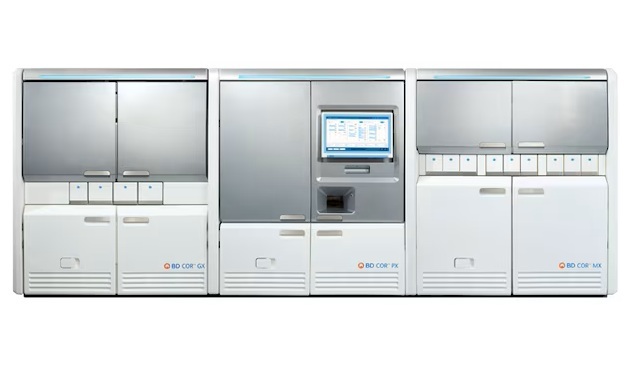Simple Sedimentation Technique Diagnoses Intestinal Parasites
By LabMedica International staff writers
Posted on 17 May 2012
The sedimentation technique for intestinal parasites is applicable for poor healthcare settings and under fieldwork conditions. Posted on 17 May 2012
The advantages of the spontaneous sedimentation technique in tube (SSTT) are its ability to detect the majority of intestinal parasites, including eggs, larvae, cysts, and trophozoites, and its low cost.
Scientists at the Cayetano Heredia University (Lima, Peru) evaluated the performance of the SSTT when compared with other parasitological techniques. The initial technique uses a 50 mL shaped plastic tube and surgical gauze to filter the homogenized stools of patients infected by intestinal parasites. After filling the tube with normal saline solution and allowing it to sediment for 1-2 hours, eggs, larvae, and cysts/trophozoites of protozoa and common intestinal parasites were seen in all sediments. SSTT is called spontaneous because the homogenized filtered fecal material requires 30–45 minutes, the longer the better, to sediment spontaneously without mechanical intervention or centrifuges.
The SSTT was compared to direct smear exam, ether–formalin concentration method (EFCM), and sulfate zinc flotation technique (SZFT) used in four different studies. When the SSTT method was compared to direct smear for 1,441 samples, there was a highly significant and superior identification for most helminths and some protozoa in the stools. The SSTT was also significantly better when compared with the EFCM for 194 samples. The SSTT method scored very well against the SZFT method for both worm eggs and protozoan cysts in 108 samples.
The authors concluded that the potential of the SSTT as a diagnostic tool for intestinal parasites in endemic areas is promising, but further studies are required such as comparison with Kato–Katz technique and other techniques. The major advantages of the SSTT technique are its relatively low material cost, approximately USD 0.03, and its simplicity of use in poor healthcare settings. The study was published online on April 10, 2012, in the International Journal of Infectious Diseases.
Related Links:
Universidad Peruana Cayetano Heredia














